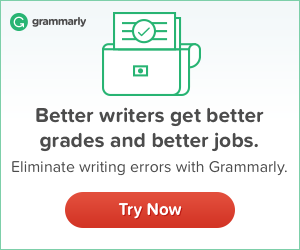Your writing is the first impression you make. It’s time to polish your writing skills and craft better emails and cover letters.
Throughout your job search, you will be composing emails and drafting cover letters to introduce yourself to potential employers or networking contacts.
Some companies still ask for cover letters, and some recruiters and hiring managers want to see one. Others won’t even look at what you write. The best approach is to submit a cover letter with your resume just in case. You may opt to use your email message as a cover letter instead. Whether you are writing a cover letter or an email, your goal is to showcase your communication skills while writing about your interest in and qualifications for the job. Here’s how:
Edit, Edit, Edit
Seldom is your first draft the best version of your writing. Once you have the first draft done, you can begin the editing process. Check to make sure you’ve addressed the who, what, where, when, why and how of your request or submission.
Here’s a breakdown of what to include in your writing:
- who you are (in one or two sentences max!)
- what you are asking for (a specific job or a networking meeting)
- when you will follow up or would like to meet
- why you are interested in the job or why you would like to meet
- how you meet the requirements
Remember, emails should be given the same meticulous attention as any other material you write. Always review your work through the eyes of the reader. Does it make sense? Will the reader want to take action?
Use a Template the Right Way
Using a template saves time, helps you structure your thoughts and can ensure you aren’t leaving out important information. It is OK to use a template as a starting point, but make sure to update it to match the company and job you are applying to.
The danger of using a template is that you may overlook customizing important parts, like the company’s or person’s name. Don’t take shortcuts, as tempting as it may be. Your cover letter must address why you want to work for the company, and the skills and experience you list must match those listed in the job posting.
Use the Person’s Name
Starting a letter with “to whom it may concern” shows that you haven’t taken the time to research the job or you didn’t read the entire job description. Generally, there is enough information in the job posting to know the title the job reports to. Take the time to look at the company website or LinkedIn page and find the name of the manager you would report to. Once you have this information, address your correspondence using the standard formal format: “Dear Mr. James Smith.” If you cannot find a person’s name, you can address the letter to “Dear hiring manager.”
Keep Your Writing Concise
Readers have short attention spans, so you need to get to the point quickly and clearly. Your cover letter should have three to four short paragraphs and should fit on a single page. It is unlikely anyone will read every word, so keep your paragraphs short and easy to skim.
Be Specific
Referencing specific details will show the reader you have invested some time researching the company. Avoid using general statements about why you would like to work for the company. In other words, don’t just write that you like their corporate culture. Reference a specific element of the company’s culture and why that is important to you. And when you list your qualifications, connect the dots for the reader by including in your letter how your experience will benefit the company.
Capture Your Reader’s Attention
There are at least a couple of ways you can grab the reader’s attention. When sending an email, use a subject line that stands out or is at least different from other email subject lines sent by people requesting the same thing. For example, if you are emailing your resume for a posted job, a common subject might be “Jane Doe Resume” or “Resume for XYZ job.” Neither of these will entice the reader. Try using something like “3 Things Your Next Marketing Manager Can Do for You” or “Here’s Why You Should Hire Jane Doe.”
Make your cover letter’s opening sentence more enticing than “Attached you will find my resume for XYZ job.” Instead, describe your success in a similar role or function or include a testimonial from a manager or customer. The idea is to provide the reader with a reason to continue reviewing what you’ve written.
Proofread
Don’t let careless grammatical or spelling errors erode your professionalism or negatively impact your candidacy for the job. You should use spell check as part of the proofreading process, but don’t expect it to find every error. Some words may be spelled correctly but used incorrectly, such as you’re versus your or their, they’re or there.
You may want to use a free online editing tool like Grammarly (affiliate) to double-check your writing for potential errors. Before you send your email or whatever you are writing, set it aside and review it later. This can help you review it through fresh eyes. An even better solution is to ask someone to review your writing before you release it.
This post originally appeared on US News & World Report On Careers

Hannah Morgan speaks and writes about job search and career strategies. She founded CareerSherpa.net to educate professionals on how to maneuver through today’s job search process. Hannah was nominated as a LinkedIn Top Voice in Job Search and Careers and is a regular contributor to US News & World Report. She has been quoted by media outlets, including Forbes, USA Today, Money Magazine, Huffington Post, as well as many other publications. She is also author of The Infographic Resume and co-author of Social Networking for Business Success.


